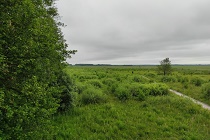 The Polesie Cross-border Geological Seminar was held on 12-14 June 2023 in Urszulin (Lubelskie province, Włodawa district). It sums up a grant project of prof. Leszek Marks entitled “Regional reference profiles of Middle Pleistocene within the Polish-Belarusian-Ukrainian borderland”.
The Polesie Cross-border Geological Seminar was held on 12-14 June 2023 in Urszulin (Lubelskie province, Włodawa district). It sums up a grant project of prof. Leszek Marks entitled “Regional reference profiles of Middle Pleistocene within the Polish-Belarusian-Ukrainian borderland”.
The tangible outcome of this project is a Geological map of the Polish-Belarusian-Ukrainian borderland, in a scale of 1: 250 000, which covers the Włodawa region (covered and uncovered map, and text explanations).
The Seminar was participated by scientists from the Polish Geological Institute - PIB, Marie Curie-Skłodowska University with the Rector, prof. dr hab. Radosław Dobrowolski, University of Warsaw, John Paul II Bialska Academy in Biała Podlaska and the Franko National University in Lviv, with prof. Andriy Bogucky and the National University of Water and Natural Resource Management in Rivne, Ukraine. Special guests included scientists of the Polesie National Park with its director, Jarosław Szymański. The Polesie National Park (PPN) is located within an area covered by the Map.
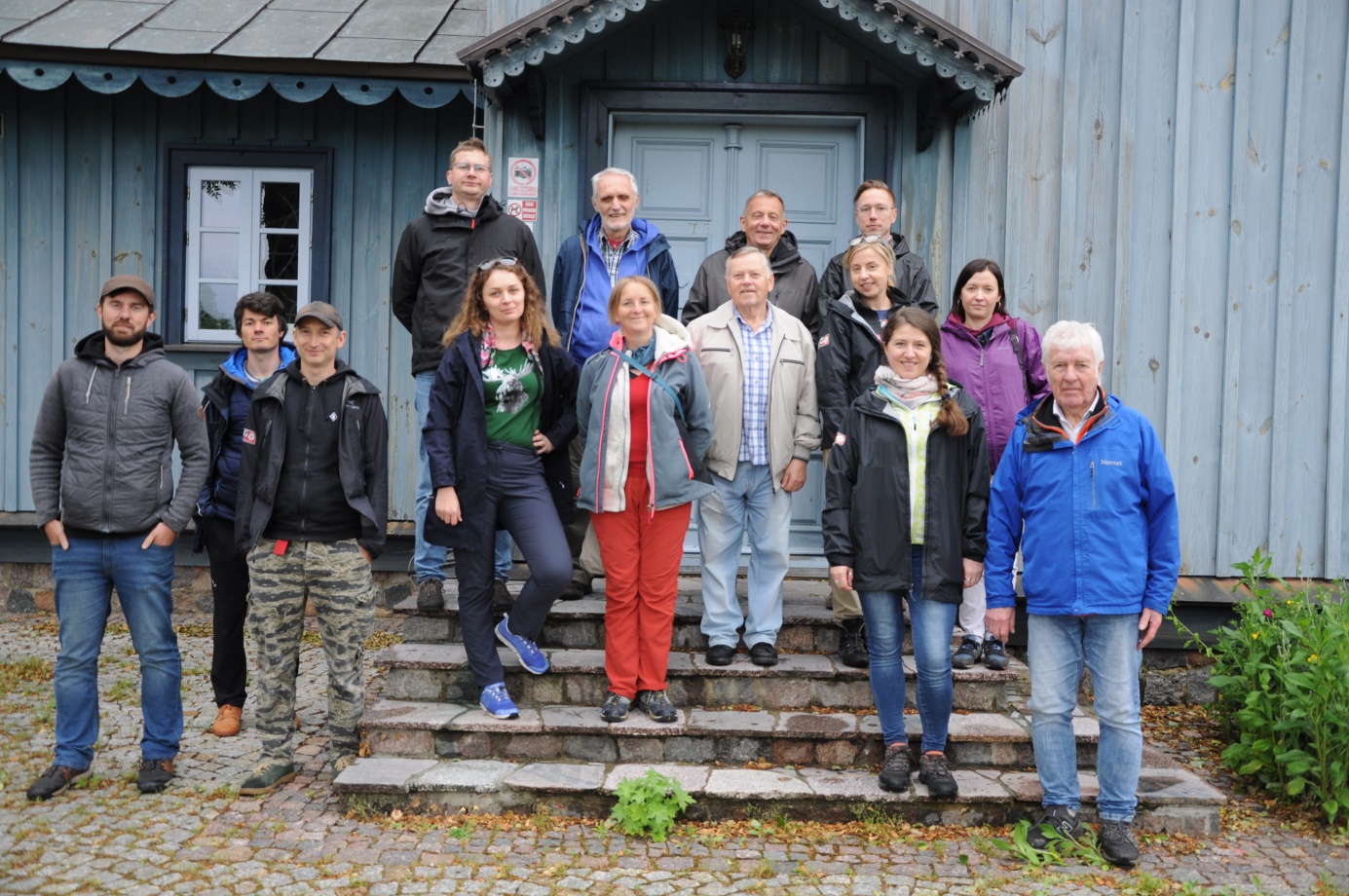
Participants of the Polesie Cross-border Geological Seminar. Photo by Elżbieta Gruszczyńska
Chamber sessions were held on 12 June 2023. Prof. Leszek Marks gave an introductory speech on the research project, followed by a presentation of the issues related to Pleistocene glaciations within the Polish-Belarusian-Ukrainian borderland. Director Jarosław Szymański familiarized the participants of the seminar with the natural values of the Polesie National Park.
Katarzyna Pochocka - Szwarc and Marcin Żarski from the PIG - PIB Department of Geological Cartography presented the geological structure of Polesie on the border of three countries. The most important conclusion drawn from this lecture was a thesis on the Odra glaciation not covering the Western Polesie region.
Anna Hrynowiecka from the PIG - PIB Department of Marine Geology discussed the results of paleobotanical research; plant successions at sites documenting fossil lakes from interglacial periods (within the Polish-Belarusian-Ukrainian borderland), including the results of her own stratigraphic revision at archival sites.
The first destination point of a field trip, which took place on 13 June 2023, was the Bubnów Bog, and included covering the Czachory educational path, located within the boundaries of the PPN. The guides were: Jarosław Pietruczuk and Radosław Dobrowolski, who discussed issues related to processes, which occurred at the turn of Pleistocene and Holocene; the melting of permafrost triggered chemical denudation (karst processes). This led to the formation of a Bubnów Bog depression – with a complex bottom morphology, filled with lacustrine gyttjas and peats (Late-Vistulian and Holocene).
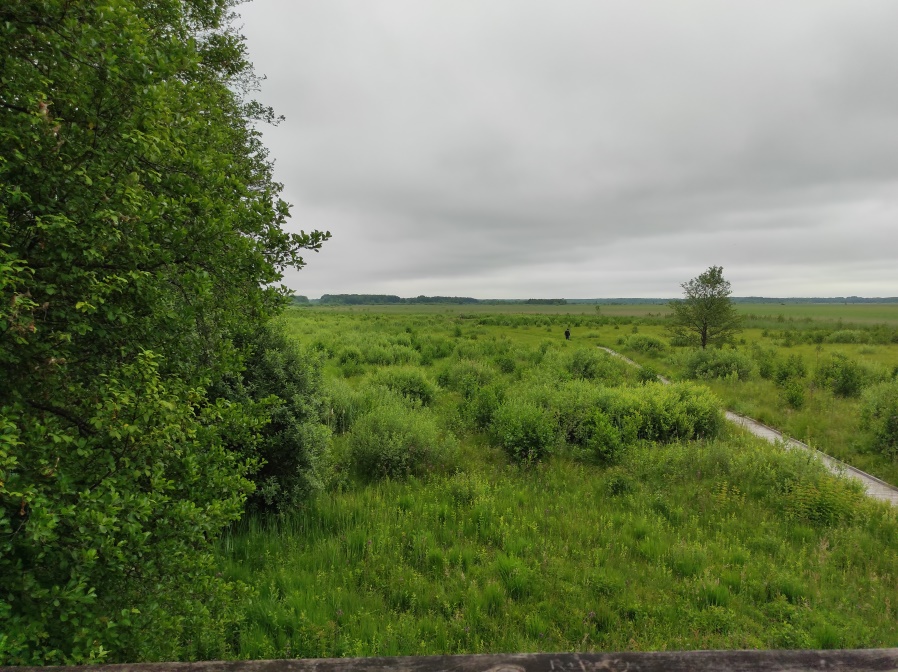
View of the Bubnów Bog within the Polesie National Park. Photo by M. Żarski
At the Karczunek site, Katarzyna Pochocka-Szwarc presented the outcrop of fluvioglacial sands and gravels (San 2 glaciations) filling the superstratum of a deep post-glacial trough. The current hill in Korczunek is considered as an inselberg formed at the turn of Vistulian and Holocene, due to uneven chemical denudation (karst processes) of nearby carbonate rock outcrops.
The geological structure of the Krowie Bog was presented by Katarzyna Pochocka-Szwarc at the next field trip site. This vast, peat-filled depression covering an area of over 36 ha is also of karst origin, similarly to the previously presented Bubnów Bog.
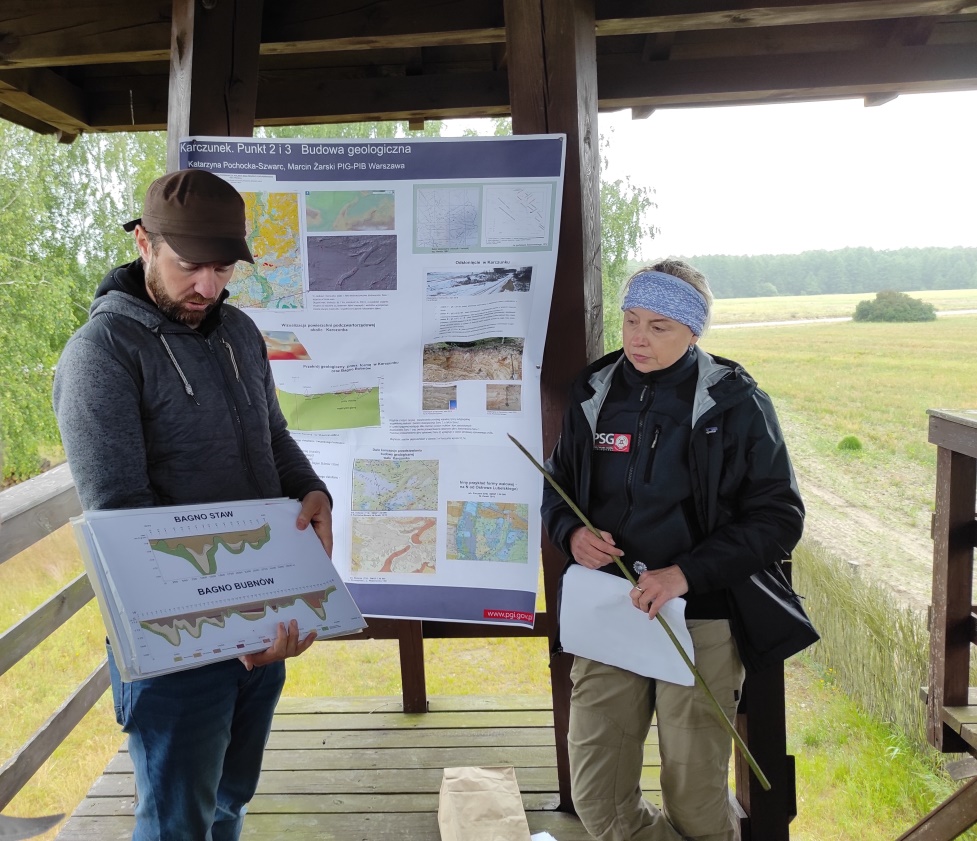
The site was presented by Katarzyna Pochocka – Szwarc and Jarosław Pietruczuk. Photo by M. Żarski
Based on the results of a palynological analysis, Anna Hrynowiecka reviewed the history of vegetation in the surrounding of the Krowie Bog: from late Vistulian through the Holocene period. Marcin Żarski discussed the history of an early medieval settlement, Okop (Okopy Szwedzkie – Swedish Trenches). The fortified settlement is situated on a small Cretaceous outlier, rising above the peat surface.
After a lunch break, the participants listened about a historical site in Sosnowica. By the nearby ponds, Marcin Żarski discussed the geological structure of this area, and Katarzyna Pochocka - Szwarc presented an outcrop, which documents deposits of the very close proximity of the ice sheet in this place. These are end moraine deposits from the San 2 glaciation period. The geological structure of the Włodawski Hammock was also discussed.
The main issues associated with the geology of the Polesie border area were discussed on 14 June 2023, during a short chamber meeting.
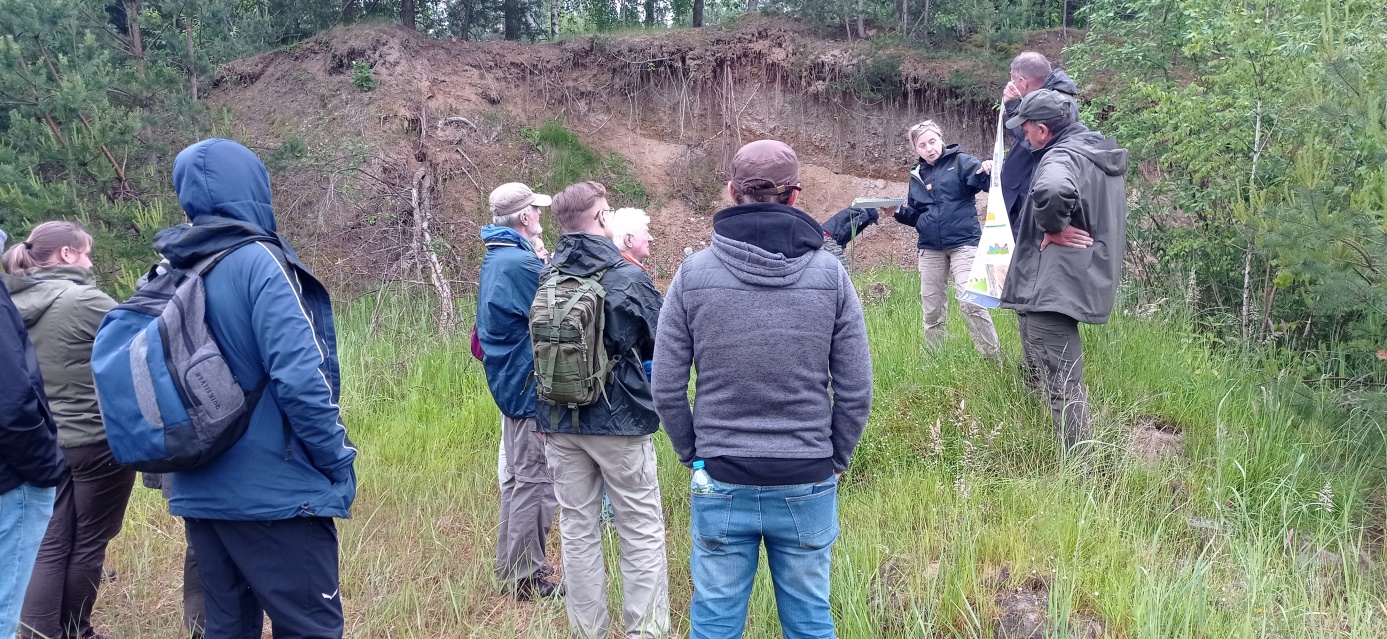
Outcrop of sediments making up the end moraine in Marianka, at the Włodawski Hammock. Photo by Elżbieta Gruszyńska
Text: M. Żarski (PGI-NRI), K. Pochocka-Szwarc (PGI-NRI)














 PGI-NRI offer
PGI-NRI offer Mineral resources of Poland
Mineral resources of Poland  Oil and Gas in Poland
Oil and Gas in Poland 




 Subscribe to RSS Feed
Subscribe to RSS Feed